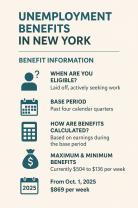What is preferred stock?
Preferred stock is a type of security that occupies a unique place in the world of investments. It shares some characteristics with both common stocks and bonds but has its distinct features. Here's an overview to help demystify preferred stock and understand its role in investments:
1. Definition of Preferred Stock:
- Preferred stock represents ownership in a corporation, much like common stock. However, it differs in that it usually doesn't carry voting rights in the company.
2. Fixed Dividends:
- One of the defining features of preferred stock is that it typically pays fixed dividends to its holders. These dividends are usually higher than what common stockholders receive but are paid before any dividends on common stock.
3. Priority in Dividend Payments:
- In the event of a company's financial troubles or liquidation, preferred stockholders have priority over common stockholders in receiving dividends and assets. They are higher up in the "capital structure."
4. No Voting Rights (Usually):
- Preferred stockholders typically don't have voting rights in the company's decision-making processes, unlike common stockholders who often have a say in matters like electing the board of directors.
5. Less Risk than Common Stock:
- Preferred stock is generally considered less risky than common stock because of the fixed dividends. However, it is riskier than bonds since bondholders have a higher claim on assets than preferred stockholders.
6. Callability:
- Many preferred stocks are "callable," meaning the issuing company can redeem them at a predetermined price after a specified date. This introduces some uncertainty for investors.
7. Diversification Tool:
- Preferred stocks can be a useful tool for diversifying an investment portfolio. They offer a source of income that can be more stable than common stock dividends.
8. Interest Rate Sensitivity:
- The market price of preferred stock is sensitive to changes in interest rates. When interest rates rise, the market value of existing preferred stocks may fall, and vice versa.
9. Types of Preferred Stock:
- There are different types of preferred stock, such as cumulative preferred stock (unpaid dividends accumulate and must be paid before common stockholders receive dividends) and convertible preferred stock (can be converted into a predetermined number of common shares).
10. Suitability:- Preferred stock can be suitable for income-oriented investors who seek a source of regular dividends but are willing to accept somewhat higher risk compared to bonds.
11. Research and Due Diligence:- Before investing in preferred stock, it's essential to conduct research and due diligence. Consider the financial health of the issuing company, the terms of the preferred stock, and your own investment objectives.
In summary, preferred stock combines elements of both stocks and bonds. It offers the potential for income through fixed dividends, and preferred stockholders have priority over common stockholders in receiving dividends and assets. However, they usually don't have voting rights and face some interest rate sensitivity and callability risks. Understanding the role of preferred stock in your investment portfolio and its specific characteristics is crucial before investing in this asset class.













